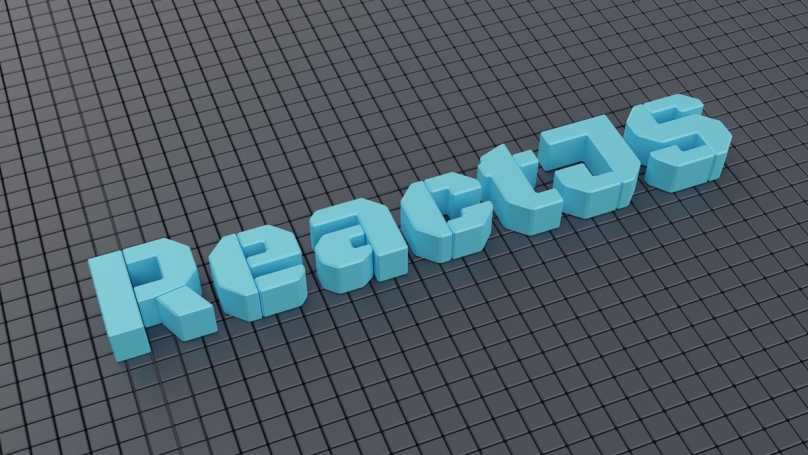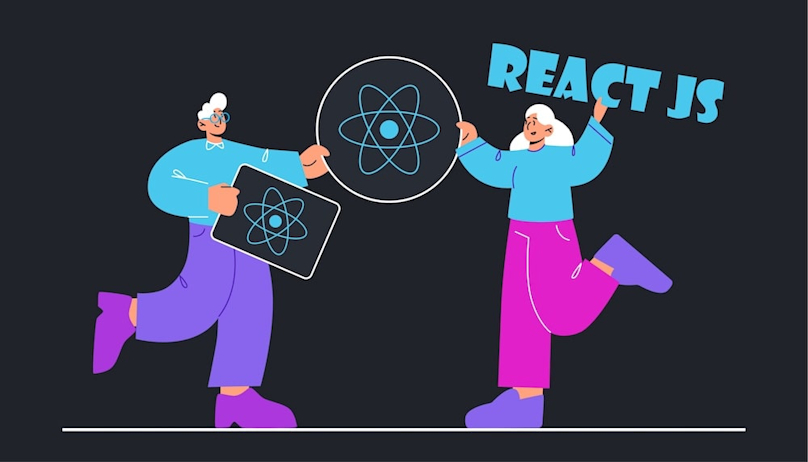Introduction
In the ever-evolving landscape of web development, server-side rendering (SSR) has emerged as a cornerstone for building efficient and user-friendly web applications. SSR, a technique where a web server renders a page's content before sending it to the client's browser, has been a game-changer in enhancing user experience and search engine optimization (SEO). Central to this process is a concept known as hydration, which brings interactivity to these server-rendered pages. With the advent of React 18, this concept has taken a leap forward, introducing new architectural innovations that redefine how developers approach SSR. This blog post delves into the intricacies of hydration SSR and explores the transformative features introduced by React 18.
What is Hydration in SSR?
When you hydrate in React from Server Side Rendering context is an intriguing and vital process. It can be metaphorically described as 'watering' the initially 'dry' HTML - sent from the server - with the 'water' of interactivity and dynamic behavior. Internally in react this involves attaching event handlers and bringing to life the static content rendered by the server, making it responsive to user interactions. Hydration in React is critical because it bridges the gap between the efficiency of server-rendered content and the dynamic capabilities of client-side applications.
The beauty of hydration lies in its seamless integration of server and client-side rendering. Unlike traditional client-side rendering (CSR), where the entire page content is generated and controlled by the client's browser, SSR with hydration allows for a more efficient initial load. The server does the heavy lifting of rendering the initial content, while the client side takes over to provide the interactive elements. This approach leads to faster page load times, a crucial factor in user experience and SEO rankings.
In the next sections, we will explore the advantages of SSR, the detailed hydration process, challenges in pre-React 18 implementations, and the groundbreaking innovations brought by React 18. Stay tuned as we dive deeper into this fascinating aspect of modern web development.
Advantages of SSR
Server-Side Rendering (SSR) offers a plethora of advantages, making it a preferred choice for many web developers. One of the primary benefits of SSR is its positive impact on Search Engine Optimization (SEO). Since the servers render the page content, search engines can easily index it, enhancing the site's visibility and ranking. This aspect is particularly crucial for content-heavy websites and those seeking to reach a wider audience.
Another significant advantage of SSR is the improved initial page load time. In SSR, users receive a fully rendered HTML page from the server, leading to a quicker first contentful paint. This speed is a key contributor to user satisfaction, especially in an era where users expect immediate access to information. Additionally, SSR provides better perceived performance. Users can view and interact with the page content even before the JavaScript bundle is fully downloaded and executed, reducing the apparent load and render time.
SSR also shines in terms of accessibility and internationalization. Since the content is server-rendered, it remains accessible even for users with JavaScript disabled or in environments with limited JavaScript support. This inclusivity extends to international users, who might face longer load times due to geographic distances. SSR helps mitigate these issues, ensuring a more uniform user experience globally.
Finally, SSR offers enhanced security and robustness. By handling rendering on the server-side, there's less reliance on client-side code, reducing exposure to certain types of security vulnerabilities. Moreover, in scenarios where JavaScript fails or is disabled on the client side, SSR ensures that the essential content and functionality remain accessible.
Do you need support with taking the frontend architecture of your web app to a higher level?

The Hydration Process Explained
Understanding the basic hydration process in SSR is crucial to grasp how React 18 enhances the web development and render of component experience. The process begins with a user requesting a webpage. In response, the servers render React components into a Virtual DOM (VDOM or reactdom) and sends this pre-rendered HTML to the client's browser. Upon receipt, the client-side browser renders the initial HTML and commences the hydration process. This is also what we can call a progressive hydration.
During progressive hydration, React components so DOM nodes become interactive on the different client side. The client-side VDOM is reconciled with the server's VDOM and server content, ensuring consistency. Additionally, with hydrateroot, event listeners are attached to interactive elements, allowing users to interact with the page as if it were rendered client-side with reactdom. This process, though intricate, is crucial for marrying the efficiency of server rendering with the dynamism of client-side applications. Also hydration is composed that way that debugging proces is efficient and we can catch hydration warnings and unavoidable hydration mismatch errors or mismatches during hydration in the components.
Challenges in Pre-React 18 SSR
Before the introduction of React 18, developers faced several challenges with SSR in react app. One significant issue was the necessity to fetch and load all components before displaying or hydrating anything. This sequential nature - fetch data, render HTML, load code, hydrate - often led to delays in interactivity, impacting user experience.
Moreover, the process lacked efficiency in handling dynamic content and user interactions. The entire page would often need to be re-rendered and re-hydrated even for minor changes eg. in one react node, leading to unnecessary resource consumption, additional render and longer wait times for users.
Innovations of React 18 in SSR
React 18 introduces groundbreaking features that address these challenges head-on. The most notable innovations are 'Streaming HTML' and 'Selective Hydration' in react applications. Streaming HTML allows for the early emission of HTML from the server, meaning the browser can start rendering the page even before all the content is fully loaded. This approach significantly improves load times and enhances the user's perception of speed.
Selective Hydration takes this a step further by prioritizing user interactions. It enables the application to become interactive before all the JavaScript and HTML are fully downloaded during first render. React 18 hydrates parts of the application so react component that users are likely to interact with first, creating a perception of instant responsiveness. This prioritization is a paradigm shift, allowing developers to build faster and more efficient web applications and component that cater better to user needs.
These innovations in React 18 not only solve the prevalent challenges of SSR but also pave the way for more advanced and user-friendly web development practices.
React 18 in Action: Case Studies and Examples
To illustrate the impact of Hydration React 18's new features in SSR, let's consider some hypothetical case studies. Imagine an e-commerce website that experiences high traffic during sale seasons. Prior to React 18, users often faced slow load times and delayed interactivity, leading to a subpar shopping experience. With React 18's Streaming HTML, the website can start rendering content faster, significantly reducing the time users wait to see the products. Selective Hydration further enhances this by prioritizing interactive elements like the 'Add to Cart' button, ensuring customers can start shopping even if the entire page hasn't loaded.
Another example could be a news website with heavy content and DOM tree. Previously, users had to wait for the entire page to load and hydrate, which could be time-consuming. With React 18 and hydration server side rendering, the news articles start appearing much faster, and interactive elements like comment sections become usable sooner. It leads do shrink the delay loading javascript of reactnode. This improvement in load times specific amount of javascript and interactivity significantly enhances the user experience, potentially increasing reader engagement and return visits.
These examples demonstrate how React 18's innovations in SSR and hydration can be leveraged to create faster, more responsive web applications, providing tangible benefits to both the business and its users.
Are you looking for skilled ReactJS frontend developers?
As a Mobile Reality, ReactJS development company, we provide our Clients with end-to-end support with React JS app development. Don't hesitate to contact us.

Future of SSR and Hydration with React
The advancements brought by React 18 are just the beginning. The future of SSR and hydration in web development looks promising, with potential for even more sophisticated and efficient rendering techniques of components. We may see further improvements in streaming and hydration strategies, making web applications even faster and more responsive. Additionally, as the web development community continues to embrace and innovate with React 18 components, we can expect a plethora of new use cases, patterns, and best practices to emerge, further enhancing the capabilities and reach of SSR in web applications.
Conclusion
Hydration in SSR, especially with the advent of React 18, represents a significant leap forward in the world of web development. The innovations in React 18 address many of the challenges previously associated with SSR, offering a more efficient, faster render and user-friendly approach to building web applications. As we continue to explore and utilize these new features, the potential for creating faster, more engaging, and more accessible web applications is immense.
We encourage developers and enthusiasts alike to dive into React 18, experiment with its new SSR capabilities, and contribute to the evolving landscape of modern web development.
References
For those interested in delving deeper into the topics covered in this blog post, the original presentation provides a comprehensive list of references, including discussions from GitHub and official React documentation. These resources offer valuable insights and in-depth information for a thorough understanding of SSR, hydration, and the innovations introduced in React 18.
Frontend Development Insights: Mastering ReactJS and VueJS
Are you fascinated by the evolving landscape of frontend development, particularly in ReactJS and VueJS? At Mobile Reality, we are eager to share our rich expertise and insights in these cutting-edge technologies. Uncover the challenges we navigate, the innovative strategies we employ, and the groundbreaking solutions we deliver in ReactJS and VueJS development. Immerse yourself in our curated selection of articles, each a deep dive into aspects of these powerful frontend frameworks:
Delve into these comprehensive resources to enhance your understanding of ReactJS and VueJS. For any inquiries or if you’re considering a career with us, don't hesitate to contact us or visit our careers page to submit your CV. Join us in shaping the future of front-end development!




